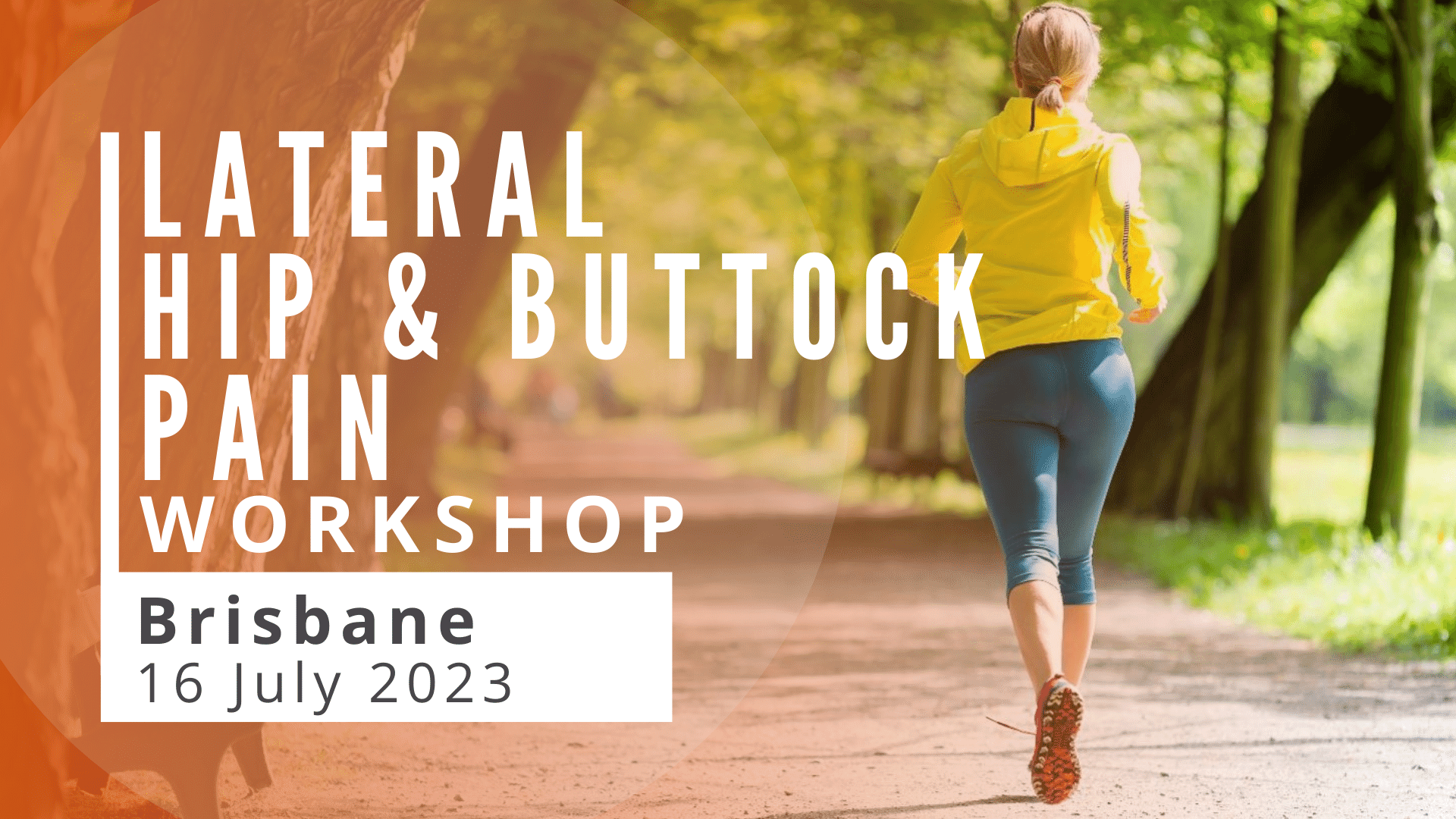
- This event has passed.
Lateral Hip and Buttock Pain Workshop | Brisbane 2023
July 16, 2023 @ 8:15 am - 4:30 pm AEST
AUD $500.00
Contemporary diagnostic & management strategies for Lateral Hip and Buttock Pain
Hip course for physiotherapists, and other health professionals – Lateral Hip and Buttock Pain
Suitable for physiotherapists and other health professionals involved in diagnosis and rehabilitation of patients with lateral hip or buttock pain.
Synopsis
Do you have a list of possible diagnoses that jump to mind when someone presents with lateral hip or buttock pain?
Do you consider posterior joint stability, extra-articular impingements of the lesser or greater trochanter, or peripheral nerve entrapments?
What is your strategy for working through the differential diagnoses?
Which markers from your patient interview and physical examination determine your pathway towards each particular diagnosis?
Once you have determined the most likely diagnosis, are you also able to identify and develop a plan to address the most potent drivers for each individual’s presentation?
Would you like to Fast Track your lateral hip and buttock Rehab?
Lateral hip and particularly buttock pain can often present a diagnostic dilemma. The lumbar spine and sacroiliac joints may refer into these regions; intra-articular hip pathologies may be accompanied by lateral hip &/or buttock pain; local soft tissues & neural structures may be primary sources of nociception. The first step is determining the most likely contributors to the patient’s pain presentation.
Developing an optimal management program with positive effects past the short term, will also require an evaluation of physical & psychological drivers. Intrinsic & extrinsic factors should be considered within the overall context of workload. While non-modifiable factors (e.g., bony morphology) are by nature unable to be modified, awareness of these factors can be integral to providing advice and interventions (active or passive) that ‘do no harm’ and development of strategies that allow maximal function with minimisation of adverse effects.
Course Aims & Objectives
Course Aims
This course aims to:
• Enhance clinical reasoning, and skills for assessment of nociceptive sources, clinical entities and drivers associated with lateral hip & buttock pain
• Provide a framework for development of optimally effective, targeted interventions for each individual that considers
a. Morphological variants & implications for load management advice, exercise therapy and manual therapy
b. Adverse joint or soft tissue loading associated with kinematics and neuromotor function
c. Individual goals and functional demands
• Provide opportunity to practice useful exercise therapy and nerve mobilisation techniques
Learning Objectives
Upon completion of this course, participants should be able to:
• Perform diagnostic tests for lateral hip and buttock pain and use that information for differential diagnosis of the most likely source of nociception or a primary clinical entity
• Provide evidence-based load management and exercise strategies for lateral hip pain
• Assess and develop management strategies for posterior hip joint instability
• Recognise occurrence of and potential drivers for extra-articular impingements such as ischiofemoral and greater trochanteric impingement
• Develop management strategies for these extra-articular bony impingements
• Differentially diagnose ischial pain, including diagnostic tests for proximal hamstring tendinopathy
• Apply neurodynamic assessment and mobilisation techniques relevant to the lateral hip and buttock, and consider the impact of soft tissue interfaces
• Recognise the important anatomical relationships and functional roles of the deep external rotators
Online Theory
The substantial theoretical component of this course is presented in an online learning format for your flexibility and optimal learning experience.
• 6 hours of PowerPoint lectures with printable notes.
• Learn anywhere, at your own pace, in your own time.
• Rewind and revise as many times as you like.
• Self-assessment quiz.
• 3 months of unlimited access to video content
The online component aims to:
• Clarify definitions and diagnoses of lateral hip and buttock pain
• Explore factors which may influence loads across the lateral hip & buttock and predispose to intra or extra-articular impingement, such as:
a. morphological variants (e.g., bony structure, soft tissue – neural relationships)
b. adverse soft tissue loading associated with kinematics and neuromotor function (focus on hip abductors and short external rotators).
• Provide an overview of key load management and therapeutic exercise strategies for lateral hip and buttock pain, particular to the patient presentation and associated difficulties with mechanical load transfer.
• Provide an update on scientific evidence for underlying diagnostic and management approaches
Practical Workshop
The practical workshop will guide participants through diagnostic tests and management strategies for lateral hip and buttock pain. There is now high-quality evidence for assessment and management of gluteal tendinopathy from the ‘LEAP’ lateral hip pain randomised clinical trial, of which Alison was a key investigator. Participants will receive first-hand instruction on techniques, advice regarding how best to apply this approach in clinical practice and valuable troubleshooting for slow or non-responders.
The workshop with then delve into the other lesser-known problems associated with buttock pain that may present diagnostic and management challenges – posterior joint instability, bony impingements, peripheral nerve entrapments and musculotendinous overload. Understanding the impact of bony morphology, soft tissue interfaces and postural and movement patterns is critical to optimal management of these conditions.
The one-day practical workshop will include:
Diagnostic tests, management strategies & key exercises for:
a. gluteal tendinopathy & associated soft tissue pathologies (Greater Trochanteric Pain Syndrome – GTPS)
b. posterior femoroacetabular impingement
c. posterior hip joint instability
d. extra articular impingements *ischiofemoral impingement
e. deep gluteal syndrome/extraspinal sciatica
f. proximal hamstring tendinopathy
Manual will be supplied.
Includes light refreshment for morning and afternoon tea.
Bring your own lunch or there are plenty of nearby options to explore.
